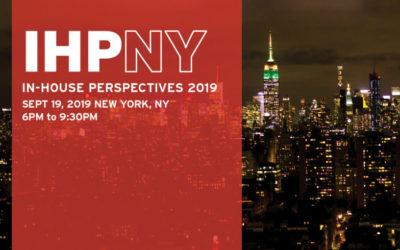“An amazing designer can design for anything” has been a long-standing belief among many managers of In-house creative teams. Yet, with the ever-evolving changes driven by innovative technologies that demand expertise in print, web, and social media communications, creative professionals are discovering that they all need to know something about everything.
InSource brought together leaders of creative teams to share their insights on the topic of The Design Career Path: Career Development for In–House Creatives and Managers 1.0 on April 19, 2012. Facilitated by Robin Colangelo, Director of Brand and Design at White & Case based in New York City, this InSource Roundtable was held in conjunction with the Thinking Creatively conference at Kean University in Union, New Jersey.
InSource provides the following takeaway messages from this event so participants can consider applying these practical ideas in their workplace.
Career paths are indeed changing over time. Instead of focusing primarily on print, creative teams are now called upon to create campaigns with multiple touch points including brochures with QR codes that lead to websites with video and animation. Although all areas are overlapping, it’s hard for managers to make this overlapping seamless. Multitasking can be overwhelming. Everyone is trying to figure it out as they go along.
Ideas to Foster Your Career as an In–House Creative Team Leader
- >Use LinkedIn for building and cultivating your own network for career growth, personal development, and exposure.
- > Attending conferences and trade shows is not only a good way to inspire your team and provide opportunities for them to network with peers outside of their own workplace, but it’s also good for leaders of creative
teams. Conference and trade show examples include: the ADC Paper Expo on May 23, 2012, in New York City; Stationery Show on May 20-23, 2012, at the Javits Center in New York City; Interactive Design Conference
on September 27–29, 2012, in Washington, DC, and on October 29–31, 2012, in San Francisco, CA; and InHOWse Managers Conference on June 21–22, 2012, in Boston, MA. - > Teach a class outside of the workplace as a creative outlet.
- > Consider active participation and Board leadership opportunities with relevant organizations and associations to further your business practices and enlarge/enhance your network.
- > Build solid relationships with leaders in other areas of your company. Listen to their challenges and offer suggestions if possible so you will be seen as a resource and a partner, not only an expenditure.
- > Explore executive leadership programs offered through a local university or Chamber of Commerce for different
perspectives on your work. - > Identify opportunities for taking on new responsibilities within your company, making an effective approach of presenting what you need and providing metrics with both the dollar amount and the cost savings of the proposed initiative in a compelling way as a business leader.
- > Institute a chargeback system for your department to educate others about measures for both cost and time savings of your in–house creative team versus outside agencies.
- > Find a mentor(s) for yourself; someone you trust outside the company can sometimes help you come up with solutions that don’t occur to you without having to showcase your dilemmas in front of your creative team first.
Ideas to Foster Further Development in Your In–House Staff
- > As managers, it’s part of our job to elevate people who report to us and train them to be future managers and leaders. We need to train them to take on some of our responsibilities so we can grow in our current job, be more strategic, and manage our team more effectively. Make it a point to off-load smaller tasks to others.
- > As the demands of the workplace move from primarily print to integrate with digital technologies, find ways to be sure the skill sets of all individuals on the creative team stay relevant and don’t become obsolete by
providing opportunities to learn additional software and increase proficiencies in web-based communications. - Onsite training and mentoring or coaching, as well as classes offered away from the office, can help your staff learn and grow. The following training resources were identified as useful: Adobe training, Creative Edge, lynda.com, and New Horizons.
- > Create a brand standards manual, as well as workflow process guidelines, to establish consistency and clarify expectations.
- > Motivate longtime staff with limited career promotion opportunities to learn and grow by giving them projects in which people higher up in the company will see their work, including becoming more active in meetings with clients.
- > Advocate for your creative team to be part of the decision making in choosing an outside agency when needed to alleviate the threat of the agency versus the in-house team dynamics.
- > Consider hiring a group of freelancers when you need to outsource a project. For example, MICA offers such teams, which can be more cost-effective and efficient than hiring an agency.
- > Assign a key person(s) on your team to stay on top of the latest technologies and trends so this knowledge can be shared with the rest of the team.
- > Create templates for email campaigns to save time and increase brand consistency.
- > Hire hybrid designers who can design for print and web plus understand social media.
- > Use Skype for video conferences to assist with managing staff in multiple locations more effectively.
- > Set up a mentoring system for your staff (eg, pairing up senior designers with junior designers).
Team Building and Staff Appreciation Ideas
- > Occasionally have lunch or a pizza party with your team.
- > Organize a Happy Hour/”Bar Night”/Dos Equis Time for your team after
work hours. - > Consider various offsite team building activities, such as a cooking class, bowling, pottery class, volunteer work, afternoon at the museum, and other well-executed adventures.
- > Give team members the day off on their birthday.
- > Give interesting homework assignments for your team for group discussion at staff meetings, such as “Bring in something retro” and share different definitions of retro, or “Bring in something you don’t like and explain why.”
Alternate Dream Jobs Shared by Our NJ Roundtable Participants
“If not at my current job, I would be exhibiting my paintings and other fine arts.”
“I would be in horticulture and nurseries making things grow, or working with a nonprofit.”
“I would be a jewelry designer or decorator.”
“I would be in sports and do some coaching.”
“I would be a decorator of celebrity stars (who are constantly changing their minds), shopping all around the world.”
“I would focus on the fine arts and teach art to children.”
“I would be a caterer and also teach students about job/business opportunities.”
“I would be a photographer for National Geographic and travel around the world.”
“I would manage a hotel, which is my backup plan if my job in advertising doesn’t work out.”
“I would be a gourmet chef.”
“I would be an arbitrator because I like solving problems.”
“I would teach children.”
“I would be a full-time volunteer.”
Special Thanks To Our Partners and Supporters: Brilliant Graphics, MICA Consulting Group, Mohawk, and Neenah Paper for their generous donation of partnerships, materials, and services to support the work of InSource! InSource also appreciates being part of the 2012 Thinking Creatively conference, thanks to Kean University and the Art Directors Club of New Jersey.





